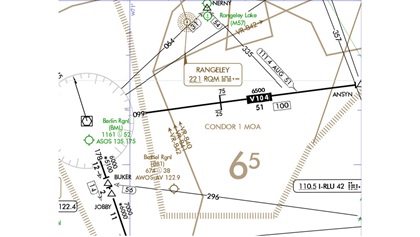
I was hiking through an apple orchard in the foothills of the White Mountains when two Fairchild Republic A–10 “Warthogs” thundered fast and low overhead. My companion was startled at the commotion on what had been a day of peace and serenity. Not me; as a chart check later confirmed, multiple military training routes pass above the spot.
Military training routes are established for conducting low-altitude, high-speed training, and are generally established below 10,000 feet msl for operations at speeds in excess of 250 knots. Pilots can obtain current information or route usage on an MTR in their vicinity by contacting flight service. So, what can you tell about the nature of MTRs from their designations (in this case, VR840, 841, and 842)?
VR signifies a visual route. IR is for instruments. Designations reveal altitudes of use: A three-digit route number means at least one route segment has one or more segments above 1,500 feet agl. A four-digit MTR has no segments above 1,500 feet agl—including instrument routes.
Visual MTRs have weather requirements: According to the Aeronautical Information Manual, operations “are conducted in accordance with VFR except flight visibility must be 5 miles or more; and flights must not be conducted below a ceiling of less than 3,000 feet agl.” IR operations “are conducted in accordance with IFR regardless of weather conditions.”
If those details didn’t come readily to mind, an AOPA survey of pilots’ awareness of special-use airspace revealed low knowledge of MTRs. Most pilots don’t check MTR activity status despite MTR lengths and high-speed, low-altitude traffic.




